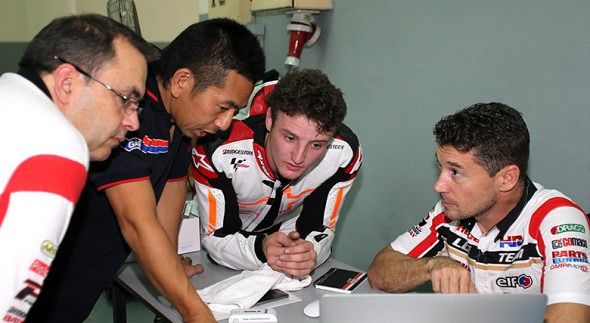I noted that MotoGP rookie Jack Miller, describing his recent test at Malaysia’s Sepang International Circuit, spoke of the “smoother, more controlled power delivery” of the pneumatic-valve Honda RC213V-RS.
I like to emphasize that pneumatic springs have value other than the raw ability to reach high rpm. What pneumatics do best is make the valves follow short-duration, high-lift cams that metal springs cannot. Engines with metal springs must be given longer duration and reduced lift if they are to reach competitive rpm, and both of these changes compromise performance. Yamaha was behind this 8-ball in 2006.
Increasing duration (valve open time) to give metal springs longer time in which to accelerate/decelerate valves has two harmful effects:
1) Keeping the intakes open longer after bottom center (BDC) allows the piston, rising on its compression stroke at low- and mid-rpm, to push out part of the fresh charge it has just pumped in (at higher revs, the inertia of the faster-moving intake flow prevents this). Less charge retained in the cylinder equals less engine torque.
2) Beginning to open the intakes earlier before top center (TDC) extends the overlap period during which the exhausts are not yet closed yet the intakes have begun to open. This creates a window through which exhaust pipe waves act to create a deep flat spot just before peak torque. (This occurs at mid-rpm when the returning pipe wave is positive and pushes exhaust gas back into the cylinder and possibly even fills the intake pipes and airbox with exhaust. The torque-weakening effect of all this exhaust gas in the cylinder produces the flat spot.)
The result of the above is both weak torque in the low- and midrange, and a steeper, more abrupt torque rise from the flat spot to the torque peak just above it. The rider finds it tricky to exit corners smoothly when his engine has to accelerate through such a steep torque rise.
The third effect is reduced intake flow even on top end, caused by the reduction in valve lift required if a metal-spring engine is to reach higher revs.
In sum, what pneumatic springs really do is allow valve motion to more closely approximate what the engine and its airflow “want.”












24
Comment